It’s hard for outsiders to understand the challenge Chinese characters pose for learners. Some people think that it’s akin to learning a new alphabet, like learning to write Korean, Russian or Arabic.
This is not the case, however, because learning to write Chinese is not a matter of learning to combine a few dozen symbols, it’s about learning 3000-4000 characters that are only indirectly linked to pronunciation, a link which only becomes reliably useful once you already know a lot of characters.
So, how can an adult foreigner learn and remember thousands of characters without spending thousands of hours?
The route taken by Chinese children is not open to us, because it means writing characters for hours every day for more than a decade. Who has time for that?
I certainly don’t! But I have learnt to write Chinese well-enough to pass handwritten exams in graduate school in subjects like teaching pedagogy, which involved writing non-stop by hand for three hours.
The good news is that by combining the best learning methods with the best learning tools, learning to read and write in Chinese is easier than ever! In this review, I will introduce the only learning tool I use daily, Skritter, but before doing so, I will go through the basic principles of learning.
Skritter review table of contents
- Research-based language learning: Use active recall and spaced repetition
- Why special tools are needed to learn and remember Chinese characters
- Enter: Skritter, your path to Chinese mastery
- Chinese-specific learning and reviewing done right
- Skritter: More than just a review tool
- Who is Skritter for?
- How do you get Skritter?
- How should you use Skritter?
- How do I use Skritter?
- How does Skritter handle traditional characters?
- Downsides and room for improvement
- Skritter 2023: What’s new?
- Interview with Skritter CEO Jake Gill New!
- Conclusion and summary of my Skritter review
- Comments and discussion
If you want to listen to me talking about Skritter instead of reading about it, tune in to the Hacking Chinese Podcast:
Available on Apple Podcasts, Google Podcast, Overcast, Spotify YouTube and many other platforms! You can also check out my interview with Skritter”s CEO, Jake Gill:
Disclaimer: I started using Skritter in 2012 and I still use it for my own learning daily, thirteen years later. Through the years, I’ve become involved in the Skritter team, starting with blogging, then moving on to Chinese language support, and currently focusing content and pedagogical matters. As such, I have an interest in promoting Skritter beyond the fact that I think it’s the best tool for learning characters, and signing up to Skritter through my links helps support Hacking Chinese too. Naturally, I wouldn’t have joined the team if I didn’t think the product was good and I certainly wouldn’t still be using the app daily if it weren’t the best I could find. I have done my best to write a balanced review and don’t pull my punches in the downsides and room for improvement section. Now, let’s get on with the review!
Research-based language learning: Use active recall and spaced repetition
A lot of research has gone into how we learn and forget things, but most of this hasn’t reached the public. The two most important principles are active recall and spaced repetition:
 Active recall means that when reviewing, you do so by actively searching your long-term memory for the right answer. It’s a well-established fact that just seeing the right answer is a bad way of reviewing. Similarly, writing a character while looking at a model character does little for your long-term memory. So, instead of just staring at the character 我 and hoping you will remember it, you need to ask yourself a question: How do I write the character that means “I; me” in Chinese? Then you write it from memory. Successfully remembering how to write it leaves stronger memory traces. Skritter offers an active way of learning and reviewing characters.
Active recall means that when reviewing, you do so by actively searching your long-term memory for the right answer. It’s a well-established fact that just seeing the right answer is a bad way of reviewing. Similarly, writing a character while looking at a model character does little for your long-term memory. So, instead of just staring at the character 我 and hoping you will remember it, you need to ask yourself a question: How do I write the character that means “I; me” in Chinese? Then you write it from memory. Successfully remembering how to write it leaves stronger memory traces. Skritter offers an active way of learning and reviewing characters.- Spaced repetition means that rather than asking yourself how a certain character is written repeatedly in one study session, you space (spread) the reviews out over days, weeks and months. This has been shown to be many times more efficient than massing repetitions together. You can further boost efficiency by gradually increasing the spacing between each review, so the better you know a character, the less often you review it. Skritter prompts you to review at the right time and is always in your pocket.
This image shows the principle of spaced repetition. You first learn something in the top left corner, but over time, if you don’t review, you follow the dotted grey line to oblivion. If you review according to a certain schedule, you make sure that you review those characters and words at risk of being forgotten, and more solid your knowledge becomes, the flatter the curve and the longer you can wait between reviews. Surf that top curve!
Why special tools are needed to learn and remember Chinese characters
The principles of active recall and spaced repetition are not secrets. Indeed, they have been thoroughly researched over decades and many apps make use of them to help you learn anything you want, from chemistry to anatomy. Using apps that rely on active recall and spaced repetition is standard practice in many educational settings where students need to memorise copious amounts of facts, such as medical school.
 However, apps that help you learn anything don’t have particularly good support for learning specific things. Learning Chinese characters is not like learning chemistry or anatomy. It’s not even like learning Spanish or French, or even Korean or Russian. It is like learning Japanese, though, which is why Skritter also has a sister app for that.
However, apps that help you learn anything don’t have particularly good support for learning specific things. Learning Chinese characters is not like learning chemistry or anatomy. It’s not even like learning Spanish or French, or even Korean or Russian. It is like learning Japanese, though, which is why Skritter also has a sister app for that.
Specific challenges require specific solutions!
Enter: Skritter
I have tried all solutions I can find that combine both active recall via flashcards and spaced repetition, but the only one I’m using daily for learning and remembering characters is Skritter. If I could send a tool back in time to when I first started learning to write characters in 2007, it would be Skritter.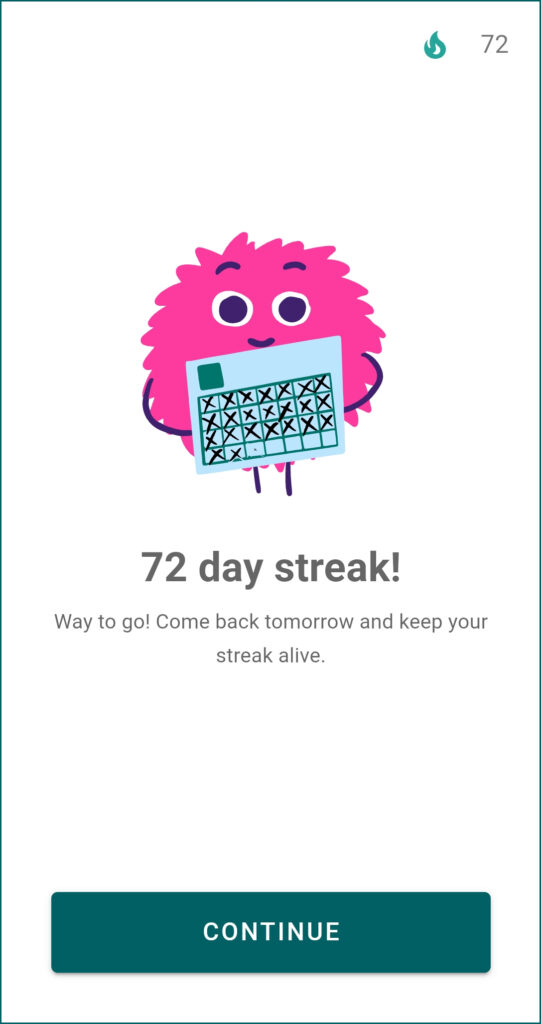
Skritter combines the power of active recall and spaced repetition with unique features for learning to read and write Chinese characters.
I’m lazy and don’t want to spend more time than necessary to remember the 6000+ characters I’ve learnt over the years. Skritter offers the most efficient solution to do this.
Lazy is just another word for efficient.
Chinese-specific learning and reviewing done right
Here are a few reasons why I think Skritter is the best tool available for learning and reviewing Chinese characters, regardless of whether you’re a beginner or a Chinese teacher like me (more about that later):
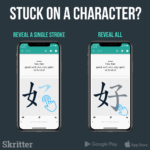 Smooth on-screen handwriting enables you to actively practise how to write the characters wherever you are. This is as close as you can get to writing on paper while still retaining all the benefits of digital learning. You learn stroke order as if by magic and the step to writing on paper is small. If you want to upgrade your experience, you can buy a cheap mesh-tip stylus. I use those from a brand called The Friendly Swede, and while I am a Swede and friendly to boot, the overlap is pure coincidence!
Smooth on-screen handwriting enables you to actively practise how to write the characters wherever you are. This is as close as you can get to writing on paper while still retaining all the benefits of digital learning. You learn stroke order as if by magic and the step to writing on paper is small. If you want to upgrade your experience, you can buy a cheap mesh-tip stylus. I use those from a brand called The Friendly Swede, and while I am a Swede and friendly to boot, the overlap is pure coincidence!- Purpose-written example sentences, curated definitions and professional audio mean you will learn much more than just writing the characters. Many other services use computer-synthesised audio and automatically generated definitions and sentences, which might work for advanced students, but certainly not for beginner and intermediate learners. It’s worth paying extra for high-quality content if you have the means to do so.
 Synchronised handling of what you have learnt allows you to access your account from multiple devices, wherever you are. Want to learn new characters in front of your computer, but then review during the day on your phone? No problem! Your data is always synced and kept up to date. Furthermore, Skritter keeps track of your learning, both for individual characters and words, using all this information to schedule reviews to boost your learning as much as possible.
Synchronised handling of what you have learnt allows you to access your account from multiple devices, wherever you are. Want to learn new characters in front of your computer, but then review during the day on your phone? No problem! Your data is always synced and kept up to date. Furthermore, Skritter keeps track of your learning, both for individual characters and words, using all this information to schedule reviews to boost your learning as much as possible.- Tons of high-quality decks ready to study. In Skritter, you can study the vocabulary for hundreds of textbooks or choose among thousands of other lists, both created by the Skritter team and by users. For example, you can study my 100 most common radical list in Skritter!
 Extended content for embedded learning. To widen the scope and include characters and words in a meaningful context, Skritter offers videos and associated lists you can learn from, directly in the app. You can also create your own lists based on videos, regardless of whether you’re a teacher wanting to use Skritter with your students or if you’re a student yourself who just found an interesting video. Many of Skritter’s own videos are available for free on YouTube! One of my favourites so far is this one about working out in Chinese, but there are many more.
Extended content for embedded learning. To widen the scope and include characters and words in a meaningful context, Skritter offers videos and associated lists you can learn from, directly in the app. You can also create your own lists based on videos, regardless of whether you’re a teacher wanting to use Skritter with your students or if you’re a student yourself who just found an interesting video. Many of Skritter’s own videos are available for free on YouTube! One of my favourites so far is this one about working out in Chinese, but there are many more.- Fun and addictive. Skritter offers measurable progress on your journey towards literacy; every character and word you learn is registered and visible. Even though the app doesn’t offer much in terms of gamification (though there is a time trial mode), it’s still fun and addictive.
Skritter has a completely free guest experience, so if you want to check it out for yourself, just download it, pick a list appropriate for your level and try it out! Please use this link to sign up on the website, which will automatically grant you 10% off any subscription plan if you decide to subscribe. Signing up is free, though, so you don’t need to commit to anything! To get the discount, you need to sign up on the website, but you can then study on iOS, Android or keep using the browser version.
Skritter: More than just a review tool
At its core, Skritter is a tool to learn and remember Chinese characters and words. This is great, but not enough for beginners. What characters and words are you supposed to learn? And what about making sense of how characters work? Simply adding them and reviewing them over and over without understanding what you’re doing is both tedious and ineffective.
Fortunately, this is an area where Skritter is developing rapidly. The best example of this (in my humble opinion) is the Skritter Character Course, where you learn the fundamentals of Chinese characters, including 150 common characters and components, all packaged nicely in 16 short video lessons. All this is available in-app at no extra cost at all! Here’s a trailer introducing the course:
I said “in my humble opinion” because I designed the content for this course and did the voice-over, so if you’ve listened to the Hacking Chinese Podcast, you’ll recognise my voice in the actual course (not the trailer; that’s Gwilym James). This was a remarkably interesting project for me, and I wrote a separate article about the course here if you’re interested: Kickstart your learning with the Skritter Character Course.
Skritter: Who is it for?
As I mentioned earlier, Skritter is for all levels of learners, but since beginner, intermediate and advanced learners need different things, here’s a quick breakdown of what I think is the biggest utility of Skritter for different learners:
 As a beginner, learning characters can be very confusing. You might be frustrated and even annoyed by stroke order. Isn’t it hard enough to learn characters, and now you tell me I must care about stroke order too? Yes, you do need to care about stroke order, but if you use Skritter, you will learn the rules automatically. As mentioned earlier, there is a featured deck with an accompanying video that is completely free, you don’t even need to register an account to use it!
As a beginner, learning characters can be very confusing. You might be frustrated and even annoyed by stroke order. Isn’t it hard enough to learn characters, and now you tell me I must care about stroke order too? Yes, you do need to care about stroke order, but if you use Skritter, you will learn the rules automatically. As mentioned earlier, there is a featured deck with an accompanying video that is completely free, you don’t even need to register an account to use it!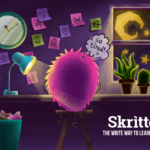 As an intermediate learner, you’re passed the initial hump. You know the basics of how characters work and stroke order isn’t as bad as it used to be. But there are so many characters to learn! You need maybe 3500-4000 just to be able to read normal texts without using a dictionary all the time. This is not something that can be conquered quickly; the only thing that works is building good habits, batten down the hatches and never give up. Skritter makes sure you don’t forget what you’ve learnt and provides extra information when you need it.
As an intermediate learner, you’re passed the initial hump. You know the basics of how characters work and stroke order isn’t as bad as it used to be. But there are so many characters to learn! You need maybe 3500-4000 just to be able to read normal texts without using a dictionary all the time. This is not something that can be conquered quickly; the only thing that works is building good habits, batten down the hatches and never give up. Skritter makes sure you don’t forget what you’ve learnt and provides extra information when you need it.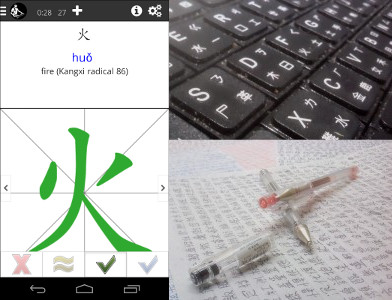 As an advanced learner, I find Skritter immensely useful. It’s part of my minimum-effort approach to writing Chinese characters by hand, which consists of reading, typing, Skritter and some communicative handwriting (such as writing notes or chat messages on your phone by hand). I teach Chinese and want to be able to write things by hand on the whiteboard when I need to. Skritter helps me stop worrying about that too much.
As an advanced learner, I find Skritter immensely useful. It’s part of my minimum-effort approach to writing Chinese characters by hand, which consists of reading, typing, Skritter and some communicative handwriting (such as writing notes or chat messages on your phone by hand). I teach Chinese and want to be able to write things by hand on the whiteboard when I need to. Skritter helps me stop worrying about that too much.- As a teacher or content creator, you can use Skritter to help your students learn the vocabulary you teach. You can easily create vocabulary lists in the app, include your own or other people’s videos (from YouTube, for example), and even make use of a classroom feature where you can monitor students’ progress! This review is aimed mostly at students, so if you’re interested in finding out more as a teacher or content creator, it’s best to contact the Skritter team directly.
Naturally, Skritter is focused on vocabulary in general and Chinese characters in particular. While you don’t have to study writing in Skritter, if you’re not interested in the written language at all, I suggest you check out Anki instead.
Skritter: How do you get it?
The best thing about Skritter is that you don’t have to commit to anything to try it out. The guest experience contains a lot of content, completely free without an expiry date. As mentioned before, please use this link to sign up on the website, which will automatically grant you 10% off if you later decide to subscribe. This is for your first purchase, regardless of how long you subscribe.
Please note that there is an old, unsupported version for iOS that is still floating around in the App Store. For the newest app that this review talks about, make sure you get the one called Skritter: Write Chinese. There’s only one app for Android, so no risk of confusion there!
Skritter: How should you use it?
How to learn and review characters for the best long-term result is a topic that goes well beyond the scope of this review, but I’ll give some advice specifically for using Skritter:
 Drill down – Most Chinese characters are made up of combinations of the same few hundred components. Skritter shows you the breakdown for each character, allowing you to make sense of the chaos. You can also add the components as items to learn and review as well. My own 100 most common radical list is available for study, for example.
Drill down – Most Chinese characters are made up of combinations of the same few hundred components. Skritter shows you the breakdown for each character, allowing you to make sense of the chaos. You can also add the components as items to learn and review as well. My own 100 most common radical list is available for study, for example.- Make mnemonics – Using clever memory techniques can boost learning and retention a lot and also make learning fun. In Skritter, you can either rely on existing mnemonics or add your own. As usual, research suggests that putting in the extra effort and creating your own is better than relying on those created by others. Make it personal!
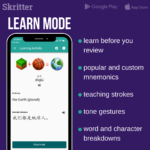 Take your time in learn mode – Spaced repetition is just what it says, repetition. It’s not particularly good for making sense of new things or processing information deeply so it sticks. When in learn mode, take your time to understand the character (drill down above), create a mnemonic and look up further information if necessary. While you can hammer away at characters until they stick, I’ve found this to be a poor method in the long run.
Take your time in learn mode – Spaced repetition is just what it says, repetition. It’s not particularly good for making sense of new things or processing information deeply so it sticks. When in learn mode, take your time to understand the character (drill down above), create a mnemonic and look up further information if necessary. While you can hammer away at characters until they stick, I’ve found this to be a poor method in the long run.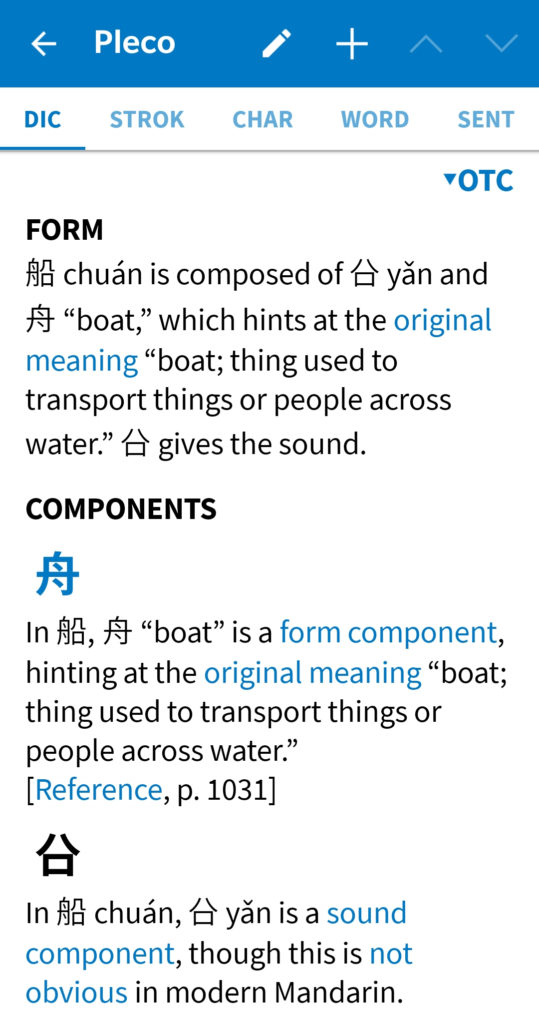 App integrations – Skritter is linked to several other apps and services you might already be using or want to check out. For example, some information from the Outlier Linguistics dictionary, which offers excellent information on character etymology and composition, is available directly in the app. If you want more, you can always click the Pleco button, which takes you to the best dictionary app for Chinese learners. Skritter also plays well with DuChinese, MDBG, Zhongwen pop-up dictionary, Beeminder, Chinesepod and Hanping Chinese.
App integrations – Skritter is linked to several other apps and services you might already be using or want to check out. For example, some information from the Outlier Linguistics dictionary, which offers excellent information on character etymology and composition, is available directly in the app. If you want more, you can always click the Pleco button, which takes you to the best dictionary app for Chinese learners. Skritter also plays well with DuChinese, MDBG, Zhongwen pop-up dictionary, Beeminder, Chinesepod and Hanping Chinese.- Enable raw squigs – Normally, Skritter will register each stroke you make, and if it’s correct, it will draw an idealised version of that stroke. This is neat because rather than looking at my own, ugly handwriting, it shows me a good model character. However, this doesn’t happen when you write on paper and is at best a crutch but can also be regarded as a kind of cheating. I suggest that all non-beginners turn on raw squigs. It will show you exactly what you write until you finish the whole character, and then it will show you the right answer. There’s also rawest squigs, which does the same but doesn’t check if each stroke is correct. This is the only writing mode I use these days.
 Cram when you need to – As I said in the introduction to this article, spaced repetition massively outperforms massed repetition in long-term learning, but research shows that cramming does work well in the short term. If you have an exam, make use of Skritter’s test mode, which allows you to drill a set of characters until you’re confident you know them well, it will even show you what you got wrong so you can focus on those. Naturally, if you review diligently, you should know most of them already, but why risk your grades?
Cram when you need to – As I said in the introduction to this article, spaced repetition massively outperforms massed repetition in long-term learning, but research shows that cramming does work well in the short term. If you have an exam, make use of Skritter’s test mode, which allows you to drill a set of characters until you’re confident you know them well, it will even show you what you got wrong so you can focus on those. Naturally, if you review diligently, you should know most of them already, but why risk your grades?
There is of course more to character learning than this, but instead of making this article even longer than it already is, I will again refer to my own character learning guide: My best advice on how to learn Chinese characters.
Skritter: How do I use it?
Everybody forgets how to write characters sometimes, even native speakers! If you’ve taken a Chinese course, you might have noticed that even your teacher forgets characters sometimes, even if they grew up with the language.
I don’t write Chinese by hand much these days, but I value the ability to be able to write any character when I need to. Now I have around five thousand unique characters active in Skritter, having scaled down a bit from the six-thousand figure I mentioned earlier. I focus mostly on writing single characters and rely on reading and listening for word-level review, but please note that this is not a feasible approach for beginners and intermediate learners! Your primary concern should be to learn words, not individual characters.
Skritter review: How does it handle traditional characters?
I started out with simplified characters but switched to traditional characters after about a year of full-time studying when I moved to Taiwan. I’m used to traditional characters being neglected or even omitted from learning tools and resources. If you’re not sure what the difference between simplified and traditional Chinese is, and which one you should learn, then I suggest you read this article: Learning simplified and traditional Chinese.
Skritter covers traditional characters better than any other similar app I’ve seen. You can study simplified, traditional or both. If you choose to study traditional, everything works as you would expect, including things that might seem minor at first, but which are quite important, such as stroke order.
In case you’re not familiar with the topic, there are differences in stroke order between simplified and traditional Chinese, even for character components that look identical! Skritter will allow you to write the traditional version and still mark it as correct. All other apps I’ve tried will force you to write simplified standard.
For example, I’m used to writing 忄from left to right, dot, vertical, dot, but the officially correct stroke order in simplified Chinese is dot, dot, vertical. In many other apps, only one of these is acceptable (usually the simplified standard), but in Skritter, both are accepted. I don’t think most users even notice this, but when trying out other apps, this can be painful.
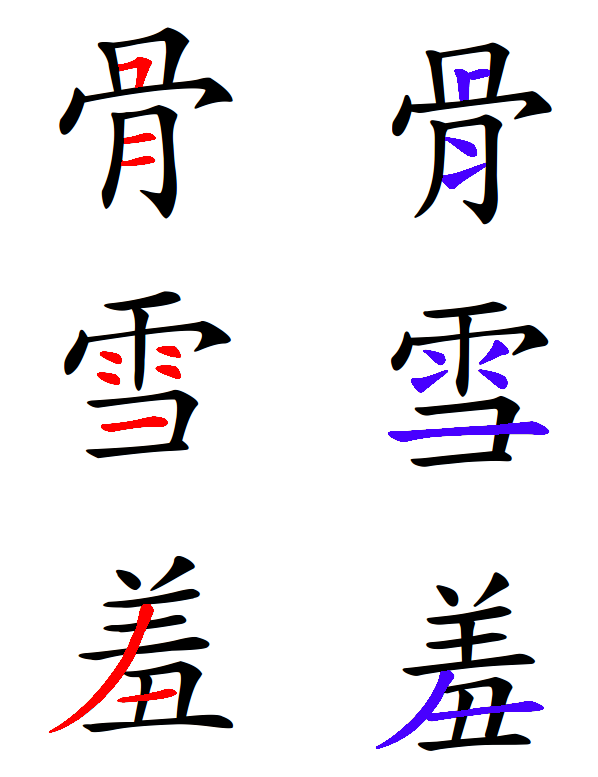
Some examples of characters that not considered simplified/traditional, but which are written and displayed differently. Mainland China on the left, Taiwan on the right. Read more here.
But it doesn’t end there. Some characters are not considered separate characters in simplified and traditional, but can still be written differently! Look at the image on the right. In simplified Chinese, the small box inside the other box in 骨 is written on the left, but in traditional Chinese, it’s on the right.
Since 骨 was not simplified, they are the same character that happens to be written slightly differently. Skritter handles this by allowing you to choose a Taiwan Ministry of Education font, which renders traditional characters correctly.
You might not have noticed some of these differences. For example, it took me more than ten years to realise that the bottom-right part of 拔, “pull”, is written differently (又 in mainland China, but 乂 in Taiwan), and I only realised this month that 蚤, “flea”, has an extra dot on the left according to the Taiwan standard!
Depending on which fonts you use in your browser, you will not see these differences in the text here, please check this article for more about fonts and Chinese characters for language learners.
Downsides and room for improvement
 No learning solution is perfect and Skritter is no exception. While Skritter does handle character writing satisfactorily, here are some downsides or areas where I think there’s room for improvement:
No learning solution is perfect and Skritter is no exception. While Skritter does handle character writing satisfactorily, here are some downsides or areas where I think there’s room for improvement:
- Rather expensive, even if it’s worth it – When everybody expects everything to be free, paying $15 a month for a learning app will come across to some students as being a bit pricey. It’s fair to say you get a lot for that, though, and that cheaper or free alternatives lack severely in one or more areas. Still, paying that much for an app is not on the menu for all students. To make it more bearable, you can use this link to sign up on the website, which will automatically grant you 10% off the price for your first subscription if you decide to subscribe. This is about the same as getting the two-year discount rate for each month, without committing to anything. Of course, if you do subscribe for longer, 10% obviously gives you even more off in dollar terms. There are also institutional subscriptions, so check if your school has one or if they can consider getting one.
- Increased support for goal setting and progress tracking – One thing I love about fitness apps is how good they are at handling your goals and showing your progress towards those goals. Skritter has some basic goal tracking, so you can set daily goals and track progress towards them, but this still feels rudimentary. I like numbers and graphs, but Skritter doesn’t have enough of them! It would be nice with backwards-looking stats telling me what I have achieved, but it would also be nice with forward-looking stats, showing how much I will need to review in the future to help me plan my learning.
- Broadened scope to include more listening and speaking – Skritter is great for learning to read and write characters, but if your goal is to practise listening or drill sentence patterns, there’s room for improvement. I realise that an app can’t do everything at once, but if I could put all my vocabulary learning into one app, that would make it even more valuable. You can of course listen to the high-quality audio for vocabulary and sentences, but this is not the focus of the learning experience, and the same is true for speaking. In the same vein, it would be nice to have long-form reading and listening practice in the app, but this again brings up the problem of an app that tries to do too many things.
- Improved drill-down features – At the time of writing, Skritter does show you character breakdowns and tailor-made example sentences, but I would like to see more features that support zooming in, zooming out and panning. This helps the user to put characters into context and understand them better. It would be great to have data from Outlier Linguistics dictionary directly in the app, something that is in the pipeline. 2023 update: As mentioned earlier, data from the Outlier Linguistics dictionary is now embedded on the info card for most common characters. Woho!
- Better error checking and follow-up – One of my favourite features in Anki is leech detection (although I think the term comes from SuperMemo). The program keeps track of what you get wrong and when you get something wrong often enough, it’s labelled a “leech”. The problem is that if not dealt with, leeches can make up a substantial part of your study time, sometimes without you realising it. Instead of reviewing and forgetting the same item dozens or hundreds of times, solve the underlying problem! Maybe delete it if you don’t need it, but otherwise buckle down, do your research and make sure you never forget it again. Skritter knows what you get wrong, but this information is not used to its full potential. I want help figuring out which characters waste my time the most and what I can do about it!
- Better handling of other standards for pronunciation – Skritter does a decent job with traditional characters, but it can’t handle most differences in pronunciation. Only one pronunciation is available for polysyllabic words (monosyllabic characters can have more than one pronunciation), so Skritter will insist on xīngqī for 星期, “week”, even if the standard Taiwan pronunciation is xīngqí. The same goes for words that are simply pronounced differently, such as 垃圾, which is pronounced lājī in mainland standard and lèsè in Taiwan.
There are of course more minor things that could be improved, just like with any app, but none that I consider more serious than those I brought up above. I could also always say I want more of the good stuff: more example sentences, more high-quality vocabulary lists and so on, but there’s already enough of that to satisfy most users and more is published every week.
Skritter 2023: What’s new?
In case you already know about Skritter, but haven’t checked it out recently, here’s what’s new since the previous version of this review, written in 2021. Naturally, there have been many small improvements, bug fixes and so on, but this list only focuses on the major improvements. For a full list, check the official page here. Also note that my interview with Skritter’s CEO, Jake Gill, is also new for this edition of the article.
New features:
- Dark mode now available (in beta, but works well enough)
- Outlier Linguistics character data is now embedded in the info panel for characters
- New and better deck browser to make it easier to find interesting content
- Ability to test incorrect items after a test session
- Speech synthesis backup audio option for items lacking human audio
- Many new integrations (mentioned in the review already)
- Zhuyin/Bopomofo readings for example sentences when enabled
- General bug fixes and improvement
New content:
- New decks
- New decks with video (also on YouTube)
- Chinese idioms course (check all courses here)
Interview with Skritter’s CEO, Jake Gill
In May 2023, I interviewed Jake Gill, who has been the CEO of Skritter since 2018. You might know what it’s like to use apps for learning Chinese vocabulary, but do you know what it’s like to run a company that builds such apps? And how can technology help us learn more, now and in the future?
Tune in to the Hacking Chinese Podcast to listen to the related episode:
Available on Apple Podcasts, Google Podcasts, Overcast, Spotify, YouTube and many other platforms!
Conclusion and summary of my Skritter review
Skritter is a modern tool for learning ancient characters. It combines research-based methods such as active recall and spaced repetition with great Chinese-specific tools and content. While it’s not a free resource, it has enough edges over more generic, free services to be worth it in my opinion.
Trying it out is completely free and you can learn quite a lot without even signing up for an account, so it isn’t hard to form your own opinion. When you do sign up, don’t forget to use this link to sign up on the website, which will automatically grant you 10% off any subscription plan if you later decide to subscribe.

Tips and tricks for how to learn Chinese directly in your inbox
I've been learning and teaching Chinese for more than a decade. My goal is to help you find a way of learning that works for you. Sign up to my newsletter for a 7-day crash course in how to learn, as well as weekly ideas for how to improve your learning!
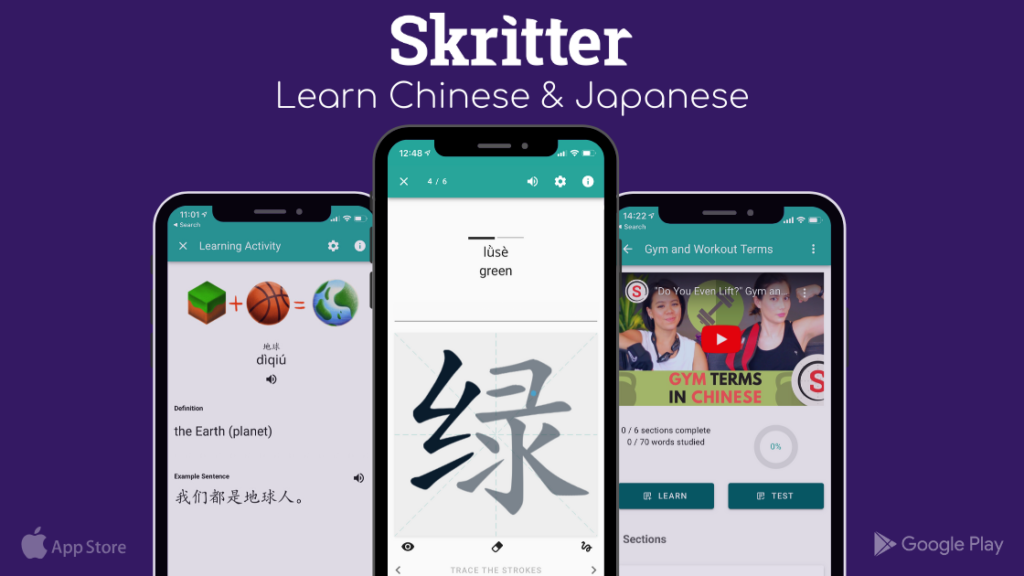
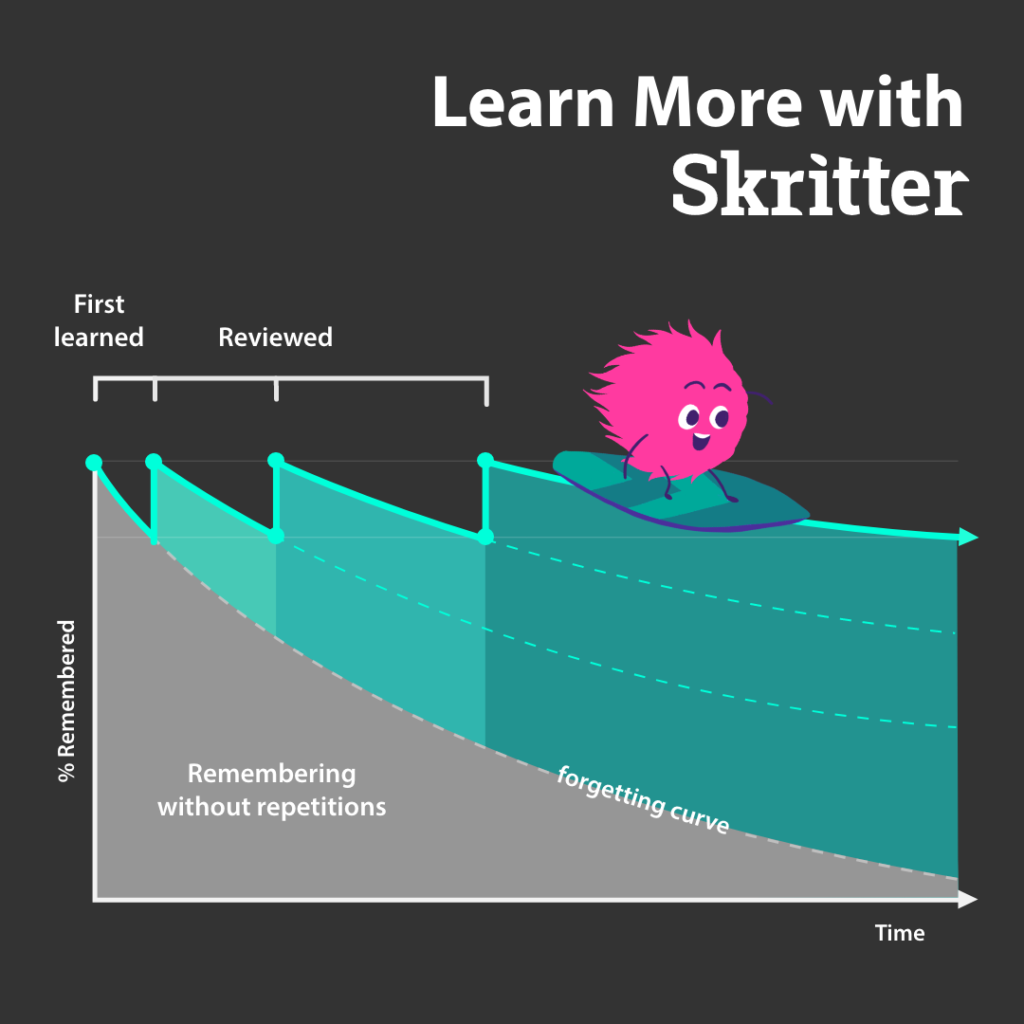
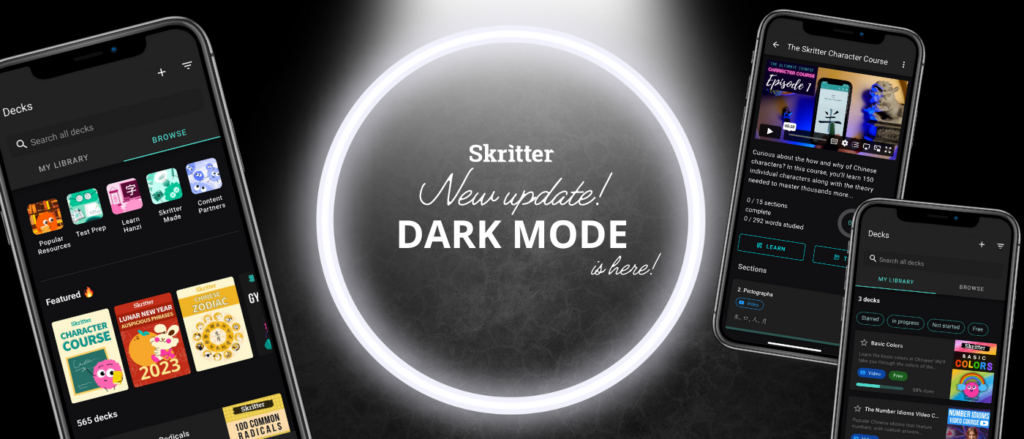
41 comments
How does it fare with Android? Cost, lack of trust in the traditional characters presented and lagging well behind development for the iOS put me off using it in the past. I’m still fairly sure I could not justify it at that price, given that books in English following the officially sanctioned Taiwanese standards are available and only require a one-off payment. There is also the question of how much physical usage aids memorisation: finger on a screen or brush/pen on paper? Perhaps the presentation of output no longer counts as a criterion, though.
The Android and iOS apps are identical these days (it’s actually a new app built entirely from scratch) and I’ve only ever used it on Android myself, to be honest, except occasionally for testing purposes. While it’s nice to have books and other sources that show you exactly what you want (I mean, the MoE dictionary is great for traditional character references, including stroke order), but that’s quite different from an app. I’m not carrying books around and don’t want to consult a dictionary all the time! I want something I always have in my pocket, that I can review characters with for a few minutes, a dozen times spread out over the day.
Your last question about output medium is interesting, though, but I doubt it has been researched. I have seen some claims that writing on paper in general (not just in Chinese) is better than typing, but this isn’t typing, you’re actively shaping the characters rather than pressing buttons resembling what you want to appear on the screen. Also, handwriting is the focus of the exercise here. If you use a stylus (many do, but I don’t), then the difference between writing on screen and on paper is even smaller!
I use Anki for this purpose. On iOS (not sure about Android) it has a ‘scratchpad’ feature that allows you to sketch the character, much like raw squigs works on Skritter. It’s not quite as feature rich as Skritter – for example, it won’t automatically detect if you got the stroke order right – but makes up for this in flexibility. If you already use Anki I’d definitely recommend giving it a try as a Skritter alternative.
For advanced learners, it even works without a writing surface at all. It requires some rigour and self-discipline, but simply imagining slotting different components into place works quite well (I wrote more about various methods here).
Hey Olle, loved your piece about Skritter and decided to try it out after reading your post. My trial just expired and it seems, that the only discount I can get is the one for one month subscription, not six months. Any idea what’s wrong?
Cheers and keep up the good work!
Yes, the discount code will give you 50% off the one-month subscription for six months, rather than 50% off the six-month subscription. It’s not very intuitive that it doesn’t show that, but if you choose the one-month subscription, the discount will last for six months!
I’d like to find out more? I’d like to find out some additional information.
Hi Olle, Skritter scratchpad is not working anymore because of Flash Player’s end of support. Now what?
https://skritter.com/scratchpad
That’s true! But what do you mean by “now what”? The new website is still fully functional, as are mobile apps for both Chinese and Japanese. They don’t rely on Flash, of course. 🙂
Anyway, I used to get to the scratchpad in the old website directly and for free, without logging in. How can I do that now in the new website? I can’t find the way to the scratchpad.
Ah, I see. There is no embedded scratchpad on the new website, but you can still achieve the same thing for free by using the following URL structure:
https://skritter.com/practice/zh/我,你,他
Just add characters or words with commas between them. The above link should get you to a writing canvas for the characters 我, 你 and 他. The first time will be tracing, then without a model the second time. Enjoy!
Thank you!! I appreciate your help. Though, I see I’m going to miss the old scratchpad, it was a wonderful tool. The new one works fine but lacks some of the features of the old one, like the possibility of diving into the etymology of the character. If you are part of the Skritter team now, please tell the programmers to consider a return to the old scratchpad. If not in the appearence, at least in the features it had. I’m not in the position of asking Skritter to do anything because I’m not a subscriber and I only use it from time to time (I’m not even a regular learner of chinese) but take this as a humble opinion of an occasional user. Thanks again for your time and help!
I think that’s unlikely, unfortunately. It’s not Skritter’s fault that Flash is now deprecated, and it’s unlikely the same feature will be rebuilt from scratch. Most of the focus is on the mobile apps, which do have a lot of free content, but no scratchpad. I think links like the one I posted is the closest to the scratchpad we’ll get!
I understand. Well, I guess I’ll have to take a look to the mobile app and see what it’s like. Regards from Argentina and tack så mycket! Hej då!
Hey Olle, how would you compare Skritter to https://www.tofulearn.com/ tofu? I was definitely drawn to Skritter, but the high monthly price tag drew me away. I used tofu for a bit, and I think it has the core srs write with your finger loop down. I do notice it doesn’t have extra raw squiggles or pleco integration, but I have learned a decent amount of character etymology from it. To be honest the biggest draw was that it was free and had a couple of decks that I cared a lot about (integraded chinese textbook words).
Do you think tofu is a good tool that has many of the benefits Skritter has? Especially for someone like me, who cares a little bit about characters cause they are pretty and cool, but doesn’t need to write by hand at all.
All apps that make use of spaced repetition and active recall will share the main benefits, so as long as you use an ordinary flashcard app with some scheduling, that will include the major benefits. What you’re paying for in Skritter is higher-quality content, such as definitions curated over a decade rather than copied from an open-source dictionary, custom made example sentences and professionally recorded audio. If those things don’t seem very important or you can’t afford Skritter, then I would definitely look into alternatives, but my go-to solution would be Anki because of it’s flexibility or Pleco because of the dictionary integration (paid, but not a subscription). Then there are also many other differences in terms of features, but those change and get updated all the time, so I can’t really keep track of all of them!
I’m using Skritter free version and really like the app. But as soon as I study all the free lists, I’ll have to move on to another alternative, as it’s very expensive for a Brazilian, especially unemployed 🙁
Yes, I understand that! It’s a tricky balance for app developers, because it’s usually good to offer free content because it can reach and help more people, but on the other hand, it costs a lot of money to build apps and create content. It’s worth noting that you can always review in Skritter, even after a subscription ends, so you won’t get locked out of content you have once learnt.
Hello! I’d be curious on your opinion of what settings to use, particularly concerning the “hide readings” and “hide definitions” settings. Is it best to turn both of these on? Just one or the other? Considerably easier with them off, not really sure what will help me most!
Good question! Generally speaking, making it harder is a good idea, but that also depends on your level and what you plan to use the knowledge for. When it comes to “hide readings”, that makes a big difference for advanced students, because with knowledge of phonetic components, it’s otherwise often possible to guess characters based on the prompt, and guessing is not what it’s supposed to be about. Then again, it depends what your goal is. I actually show Pinyin because my goal is to see if I can write something I can say by hand, not if I know the word in the first place. You can apply the same logic to hide definition: What is you actually want to test? Does showing the definition impair your ability to do so? I would say the case for hiding definition is not as strong as for hiding readings, generally speaking. I should also mention that I’m working on a study guide for Skritter that will probably be out in a few months, and all this is discussed there in more detail!
Oh wonderful, much appreciated! Very much look forward to reading the Skritter study guide when it comes out!
Let me run my thought process by you in the meantime then, and let me know if this seems sensible. I’m at a low-intermediate/high-beginner level, and use Skritter for all my flashcards needs, ie. when I learn new words anywhere else, I try to add them to my Skritter deck to consolidate and practice identifying characters, how to say a word in Chinese, plus, of course, writing practice.
My initial thoughts were to select only hide definition, so that during reading practice I was identifying characters on their own as I’ll read them in and Chinese texts to help my Chinese reading, and during definition practice I’d get to see the pinyin to help me practice identifying what words actually mean. Flip side is then the definition is hidden during writing practice, which I feel would be more useful than just the pinyin.
I’ve been going back and forth though over the past few weeks!
Yes, I think your reasoning makes perfect sense! I think it’s what I would do, too (I normally only practise handwriting in Skrtiter, but that’s because I’m only maintaining knowledge and haven’t added more than a handful of words in five years).